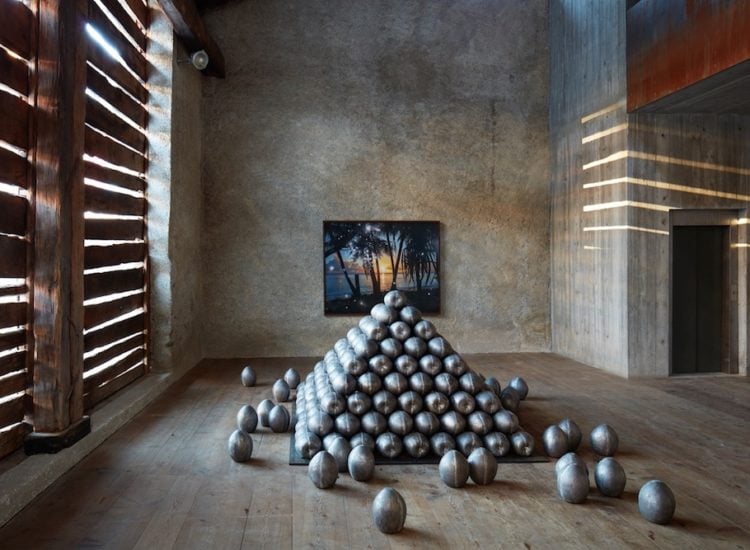Following a raid on his Berlin studio, German police confiscated a coconut cannon from artist Julian Charrière that was meant to go on view during the first-ever Antarctic Biennale. With the artwork now languishing in a guarded storage facility, it may never go on view but a gallery show by the French-Swiss artist, which relates to the same themes as the confiscated cannon, can still be enjoyed in Switzerland this week.
Swiss gallery Galerie Tschudi is currently showing Charrière’s “First Light” which pays tribute to the people of the Marshall Islands and the damage and suffering caused by American nuclear testing on their land.
Now in its final few days, the show explores the relationship between industrial modernity and geography through the Marshall Islands’ Bikini Atoll’s post-colonial and radioactive landscape after a the artist returned from a month-long journey to these abandoned sites.
The works showcase the damage done across socio-linguistic, civil, and biological fields. Unlike the connotations the word “bikini” holds today, its English name is actually from the Marshallese Pikinni: “Pik” meaning “surface” and “Ni” meaning “coconut”—or surface of coconuts.
Similarly, after the test program, all the coconut trees were permanently damaged by radiation and cut down to be replanted in a dystopian grid-like formation. Even this was pointless as the new trees still carried the profound effects of the radiation. Charrière references the coconut’s genetic mutations in his series Lost at Sea – Pikini-Fragments. Here, the coconuts stand erect with phallic connotations when, in reality, they are infertile.
Charrière also applies an atomic development-like process to his photography in the show where the beauty of stereotypical tropical idyllic settings are significantly altered when the photographs are physically exposed during the development process.
Julian Charrière, “First Light” is on view at Galerie Tschudi until 18 March, 2017.
